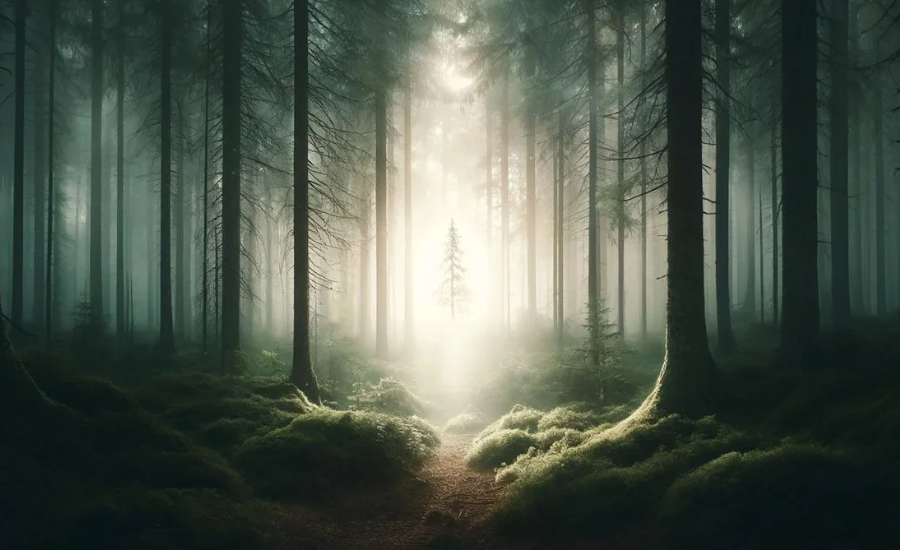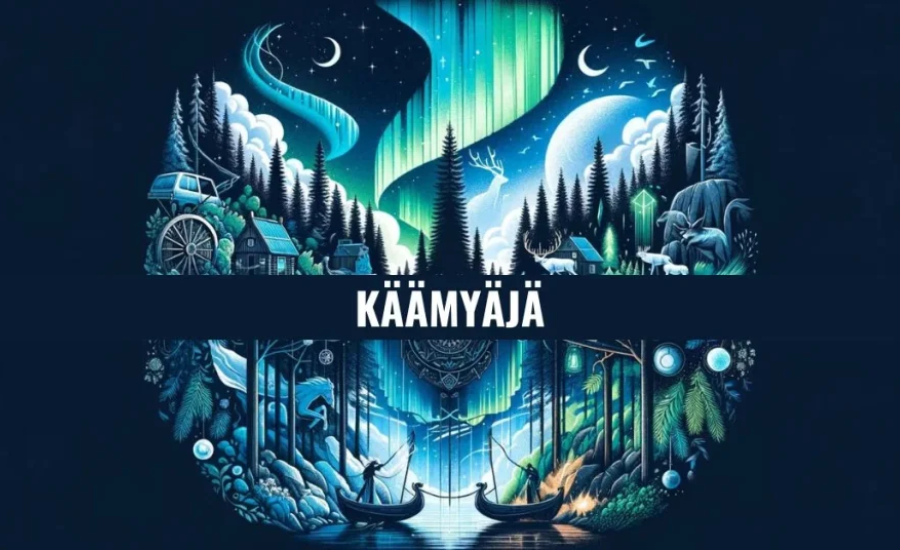“Discovering Käämyäjä: Exploring The Mysteries Of Finland’s Folklore”
Introduction
Käämyäjä, deeply rooted in Finnish cultural heritage, blends folklore, spirituality, and ecology. Beyond its literal meaning, it symbolizes meticulousness, natural stewardship, and a deep bond with the environment. Historically, Käämyäjä embodies Finnish resilience and strength, while in modern usage, it describes individuals known for their attention to detail. This article explores Käämyäjä’s origins, cultural significance, and role in folklore and mythology. It also examines its ecological importance, particularly in supporting forest ecosystems through epiphytic lichens, and discusses how Käämyäjä influences contemporary Finnish society.
The Origins Of KÄÄMYÄJÄ

Historical Beginnings And Linguistic Evolution
The term “Käämyäjä” holds a profound historical lineage deeply embedded in ancient Finnish customs. Originating from archaic Finnish dialects, “käämy” denoted intricacy and coiling, symbolizing meticulousness and intricate detail. Over centuries, this term underwent evolution, assuming various meanings within Finnish societal contexts. The suffix “-äjä,” commonly signifying an active participant, imbues “Käämyäjä” with connotations of being a meticulous doer or a master of intricate detail.
Traditional Finnish Ceremonies And Observances
In traditional Finnish practices, Käämyäjä occupied a revered position closely intertwined with nature and the forest. Ancient Finnish beliefs revered the natural world as inhabited by spirits and protectors, among whom Käämyäjä was venerated as a guardian of flora and fauna. Seasonal festivities, particularly those marking transitions, featured rituals venerating Käämyäjä, seeking favor for abundant harvests and safeguarding against natural adversities.
Early Depictions In Finnish Mythology And Literature
Earliest references to Käämyäjä are enshrined in Finnish literary works and oral traditions. Epics like the Kalevala, Finland’s national saga, allude to forest spirits resembling Käämyäjä. These narratives depict Käämyäjä as a meticulous spirit deeply intertwined with the forest’s intricate life web. Stories portray Käämyäjä as a benevolent guardian, embodying qualities of diligence and meticulous attention to detail.
Emblem Of Endurance And Natural Equilibrium
Beyond its literal and mythical dimensions, Käämyäjä emerged as a symbol of endurance and natural equilibrium within Finnish cultural ethos. This emblem resonated profoundly with Finnish communities historically residing amidst expansive forests, deeply reliant on natural resources for sustenance. The cultural reverence for Käämyäjä thus underscores a broader ethos of respecting nature and harmonizing with the environment’s rhythms.
Symbolism In Finnish Spiritual Traditions

Significance Within Finnish Spiritual Culture
Käämyäjä occupies a revered position within Finnish spiritual traditions, symbolizing not only resilience and meticulousness but also the profound interconnection between humanity and the natural world. Finnish spirituality is deeply rooted in nature, and Käämyäjä embodies this sacred relationship. It is invoked during rituals and seasonal celebrations, serving as a symbol of the delicate balance and harmony within forest ecosystems. The meticulous character of Käämyäjä, often depicted as a guardian spirit of the forest, reflects Finnish reverence for precision and the conscientious stewardship of ecological equilibrium.
Role In Ceremonies And Harmony With Nature
In traditional Finnish ceremonies, Käämyäjä is revered as an essential spirit ensuring the vitality and well-being of the forest. These ceremonies involve offerings and prayers, conducted in the hope of receiving Käämyäjä’s blessings and protection. The presence of Käämyäjä underscores the intrinsic value of nature in Finnish spiritual life. By venerating Käämyäjä, Finns express gratitude for the forest’s resources and their commitment to living harmoniously with the natural environment.
Depictions In Finnish Cultural Expressions
Käämyäjä has also been a prominent motif in Finnish art and literature, symbolizing the enduring spirit of the Finnish people. In literature, Käämyäjä is often portrayed as a vigilant guardian whose watchful presence ensures the forest’s equilibrium. Artistic representations of Käämyäjä, spanning from traditional paintings to contemporary artworks, emphasize its mystical and enigmatic qualities. These depictions serve as poignant reminders of Finland’s cultural legacy and deep-rooted respect for nature.
Käämyäjä As A Symbol Of Fortitude
Beyond its spiritual connotations, Käämyäjä symbolizes the resilience and fortitude of the Finnish people in folklore. Often depicted as an indomitable spirit guarding the forest against adversity, Käämyäjä resonates with the Finnish concept of sisu—an enduring determination and courage in the face of challenges. By identifying with Käämyäjä, Finns draw strength from their cultural heritage and historical struggles, embodying a steadfast commitment to thriving within their rugged natural environment.
KÄÄMYÄJÄ In Modern Finnish Usage
Contemporary Interpretation Of “Käämyäjä”
The term “Käämyäjä” in modern Finnish parlance has departed from its mystical and spiritual origins to embrace a more commonplace colloquialism. Today, it is frequently employed to describe individuals who exhibit an excessive focus on detail or are perceived as overly meticulous. This contemporary adaptation reflects Finnish cultural values that appreciate thoroughness and precision, albeit sometimes with a touch of humor or critique.
Descriptive Use Of “Käämyäjä”
When someone is labeled a Käämyäjä in everyday discourse, it typically denotes their meticulous nature, often to the extent of being fastidious or pedantic. For example, someone who meticulously arranges their workspace or insists on flawlessness in every endeavor might be humorously referred to as a Käämyäjä. While this characterization can be complimentary in contexts valuing attention to detail, it may also subtly imply a critique if the meticulousness is perceived as excessive or unnecessary.
Evolutionary Impact On The Finnish Language
The widespread adoption of “Käämyäjä” in everyday speech underscores language’s dynamic nature and its capacity to evolve with cultural shifts. This semantic evolution illustrates how traditional terms can be reinterpreted to suit contemporary contexts while maintaining ties to their historical and cultural origins. Thus, “Käämyäjä” functions as a linguistic conduit, bridging Finland’s rich cultural heritage with its modern societal norms and expressions.
Legends And Folklore: Käämyäjä, Guardian Of The Forest

Finnish Folklore Tales Of Käämyäjä
In Finnish folklore, Käämyäjä is revered as a mystical entity entrusted with preserving the delicate balance of the forest ecosystem and safeguarding its inhabitants. Passed down through generations, these tales depict Käämyäjä as a vigilant and benevolent spirit whose presence ensures the flourishing of the forest. Described as an unseen but palpable force, Käämyäjä’s influence is pivotal in upholding the natural harmony. It is believed to wander through the woods, overseeing plant growth and animal welfare, ensuring adherence to the laws of nature.
Distinctive Attributes Of Käämyäjä In Folk Narratives
Central to Käämyäjä’s portrayal in folklore is its meticulous and diligent nature. Stories portray this spirit as deeply attuned to every aspect of forest life, possessing unparalleled knowledge of flora and fauna. This meticulousness is revered as essential, enabling Käämyäjä to sustain the forest’s vitality and well-being. Additionally, Käämyäjä is characterized as wise and compassionate, intervening only when necessary to shield the forest from harm, whether caused by natural phenomena or human actions.
Comparative Insights With Global Mythologies
While Käämyäjä remains uniquely Finnish, its role as a forest guardian resonates with similar entities found in diverse cultures worldwide. For instance, in Japanese folklore, Kodama are tree spirits believed to protect forests. Likewise, Native American traditions feature tales of forest spirits and guardians overseeing nature’s welfare. These parallels underscore a universal acknowledgment of nature’s sanctity and the imperative of its safeguarding, embodied in meticulous and caring guardian figures.
Contemporary Reverberations Of Käämyäjä
Despite its ancient origins, the legend of Käämyäjä continues to exert a profound influence on modern Finnish culture. It symbolizes the enduring bond between Finland’s people and their natural surroundings. In contemporary narratives, artistic expressions, and environmental advocacy, Käämyäjä serves as a poignant symbol advocating for the preservation of the environment. Its enduring legacy in folklore and mythology reinforces its stature as a cultural icon, perpetuating awareness of ecological stewardship and conservation.
Ecological Insights Into KÄÄMYÄJÄ

Käämyäjä: Epiphytic Lichens In Finnish Forests
The term “Käämyäjä” not only carries cultural and mythical significance but also serves as a scientific descriptor for specific types of epiphytic lichens thriving in Finnish woodlands. These lichens, benignly adhering to tree surfaces, play a pivotal role in forest ecosystems. They mirror the meticulous and intricate qualities attributed to the mythological Käämyäjä, embodying a delicate symbiosis with their environment.
Critical Role Of Epiphytic Lichens In Forest Ecology
Epiphytic lichens serve as vital indicators of forest health and biodiversity. Their presence and abundance offer insights into the overall condition of forest ecosystems, acting as bioindicators sensitive to climate variations and air quality. Moreover, these lichens contribute significantly to the nutrient cycle by absorbing atmospheric nutrients like nitrogen and sulfur. When they decompose, they enrich the soil, fostering the growth of other vegetation.
Contribution To Nutrient Cycling And Ecosystem Balance
Epiphytic lichens are integral to maintaining ecological equilibrium by enhancing nutrient availability in forest soils. Through their nutrient absorption and subsequent deposition on the forest floor, they facilitate soil enrichment crucial for the sustained growth of trees and diverse plant species. Additionally, lichens provide habitats for microorganisms and small invertebrates, further enriching forest biodiversity.
Conservation Imperatives And Ecological Value
Recognizing the ecological importance of Käämyäjä as epiphytic lichens underscores the necessity for conservation efforts. Forests hosting robust lichen populations exhibit greater resilience to environmental stressors. Conservation initiatives must focus on preserving natural habitats, safeguarding air quality, and mitigating climate impacts to sustain these crucial bioindicators. Protecting epiphytic lichens not only safeguards their populations but also enhances overall forest health and sustainability.
Alignment With Finnish Environmental Ethics
The ecological insights into Käämyäjä resonate deeply with Finnish environmental ethics, which advocate harmonious coexistence with nature. The meticulous attention to detail embodied by Käämyäjä reflects Finnish principles of environmental stewardship and sustainable practices. By valuing lichens and their ecological roles, Finnish culture underscores interconnectedness across ecosystems and underscores the imperative for responsible environmental management.
Personal Narratives And Experiences
Insights From Finnish Individuals
Exploring the personal significance of Käämyäjä involves delving into the experiences and narratives shared by Finnish individuals. For instance, Anna, a forest ranger hailing from Lapland, reminisces about her childhood encounters with the concept of Käämyäjä. “My grandmother used to recount tales of the Käämyäjä spirit safeguarding the forest,” she fondly recalls. “These stories instilled in me a deep appreciation for nature’s delicate equilibrium and inspired my journey into environmental conservation.”
Personal Accounts And Reflections
Numerous Finns share personal anecdotes underscoring Käämyäjä’s impact on their lives. Juhani, an artist residing in Helsinki, shares how the meticulous essence of Käämyäjä resonates within his artwork. “I’m drawn to the meticulousness of Käämyäjä,” he reveals. “In my paintings, I weave elements from Finnish forests and the spirit of Käämyäjä, reflecting our cultural heritage and emphasizing the importance of preserving nature.”
Anecdotal Insights Into Everyday Influence
Even in contemporary urban settings, the influence of Käämyäjä remains palpable. Eeva, a teacher based in Turku, integrates the legend of Käämyäjä into her environmental education curriculum. “By sharing the legend of Käämyäjä with my students, I aim to cultivate a sense of environmental responsibility,” she explains. “It underscores the idea that our actions, no matter how small, can profoundly impact our surroundings.”
Echoes Of Cultural Resonance
These personal narratives and anecdotes vividly illustrate the profound cultural significance of Käämyäjä within Finnish society. They illuminate how ancient folklore continues to shape contemporary values and behaviors, effectively bridging the gap between tradition and modernity. Through these accounts, we gain deeper insights into how Käämyäjä influences individual perspectives and collectively enriches the cultural fabric of Finland.
FAQs About Käämyäjä
Q: What does “Käämyäjä” mean in Finnish folklore?
A: In Finnish folklore, “Käämyäjä” refers to a mystical spirit or guardian associated with forests. It is revered for its meticulous nature and role in maintaining the ecological balance of the natural environment. This term symbolizes the deep cultural and spiritual connection Finns have with their forests.
Q: How is “Käämyäjä” perceived in modern Finnish culture?
A: In modern Finnish culture, “Käämyäjä” has evolved beyond its spiritual origins. It is now used to describe individuals who demonstrate meticulous attention to detail. This term reflects Finnish values of precision and thoroughness, often with a touch of humor or critique depending on the context.
Q: What role do epiphytic lichens play in relation to “Käämyäjä”?
A: Epiphytic lichens, also referred to as “Käämyäjä,” are essential indicators of forest health and biodiversity in Finland. These lichens contribute to the nutrient cycle by absorbing atmospheric nutrients and enriching soil quality when they decompose. They support diverse plant life and serve as bioindicators sensitive to environmental changes.
Q: How does “Käämyäjä” align with Finnish environmental ethics?
A: “Käämyäjä” embodies Finnish environmental ethics by emphasizing harmony with nature and responsible stewardship of natural resources. It underscores the interconnectedness of ecosystems and promotes sustainable environmental practices. This cultural symbol encourages respect for nature’s resilience and the importance of conservation efforts.
Q: What cultural and spiritual significance does “Käämyäjä” hold for Finns today?
A: Today, “Käämyäjä” remains a potent symbol of Finland’s cultural heritage and environmental consciousness. It inspires artistic expressions, environmental activism, and a collective reverence for the sanctity and resilience of the natural world. This folklore figure continues to shape Finnish identity and foster a deeper appreciation for the interconnectedness of all living beings.
Conclusion
In conclusion, Käämyäjä represents a deeply rooted symbol within Finnish culture that transcends its mythical origins. Originating from ancient folklore, Käämyäjä has evolved to symbolize resilience, meticulousness, and the enduring spirit of Finland. It underscores the country’s profound connection with nature, serving as a reminder of the delicate balance between humanity and the natural world. As Finland faces contemporary challenges, Käämyäjä continues to inspire reverence for the environment and encourages responsible stewardship among its people. Through its exploration in folklore, ecological significance, and personal anecdotes, Käämyäjä emerges as both a cultural icon and a testament to Finland’s cultural heritage and environmental consciousness.
Stay in touch for more updates and alerts visit: Vents Home!






